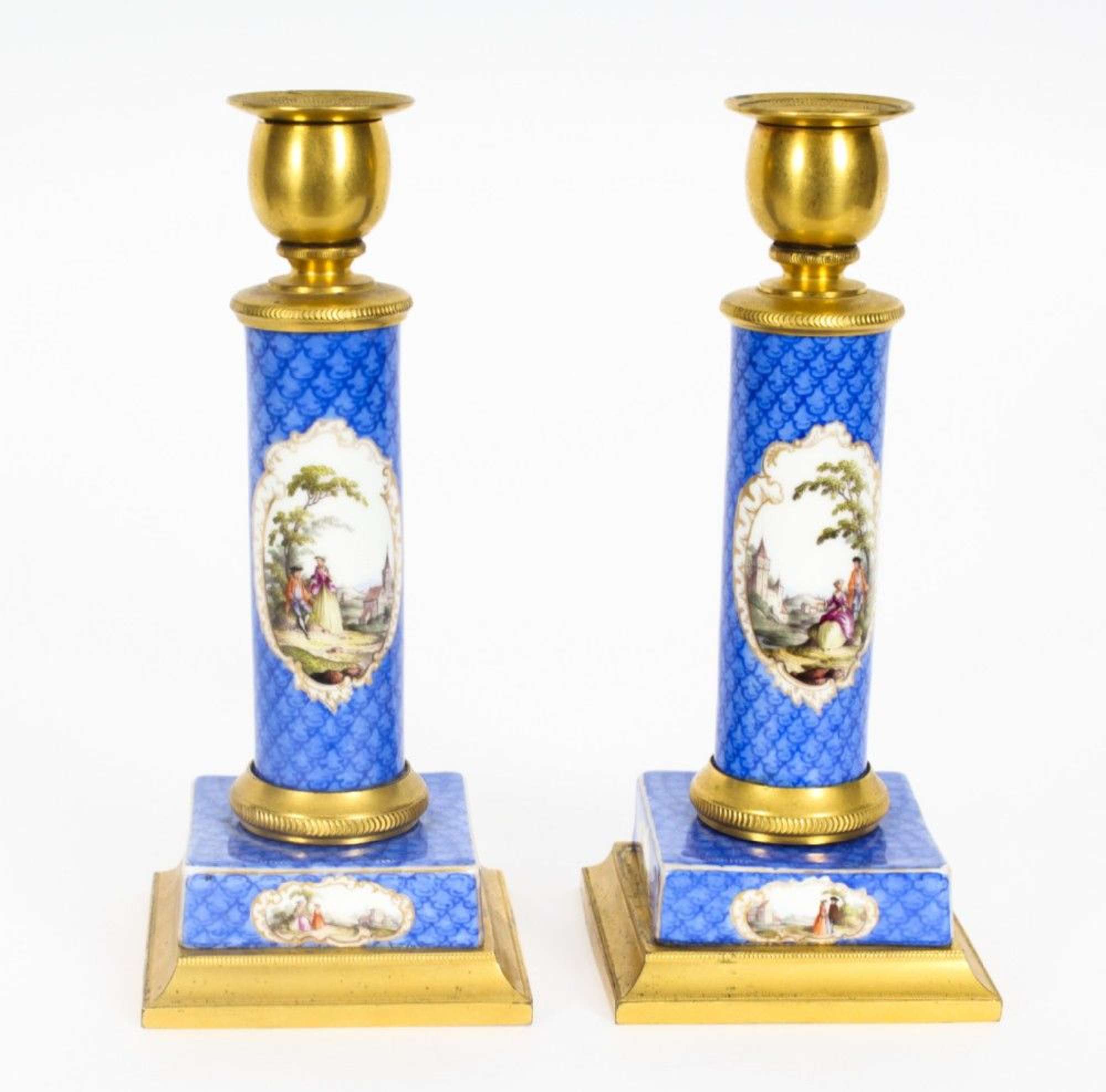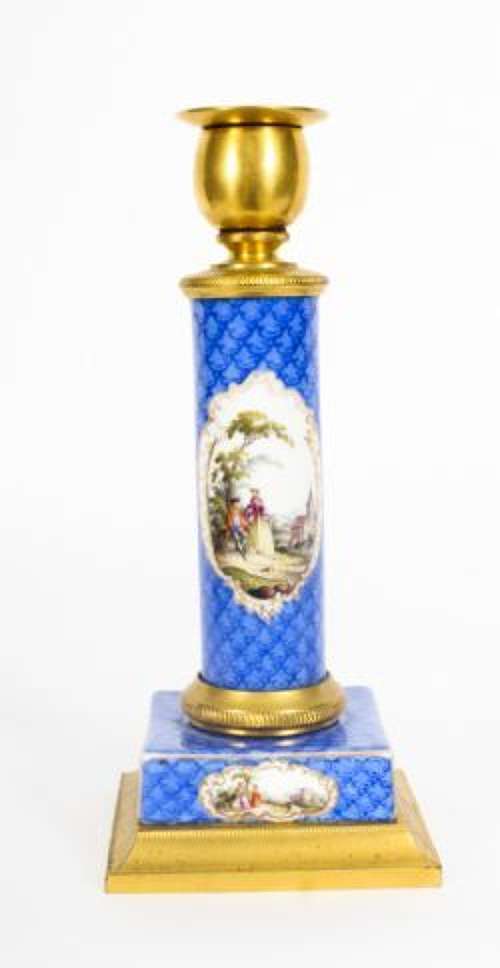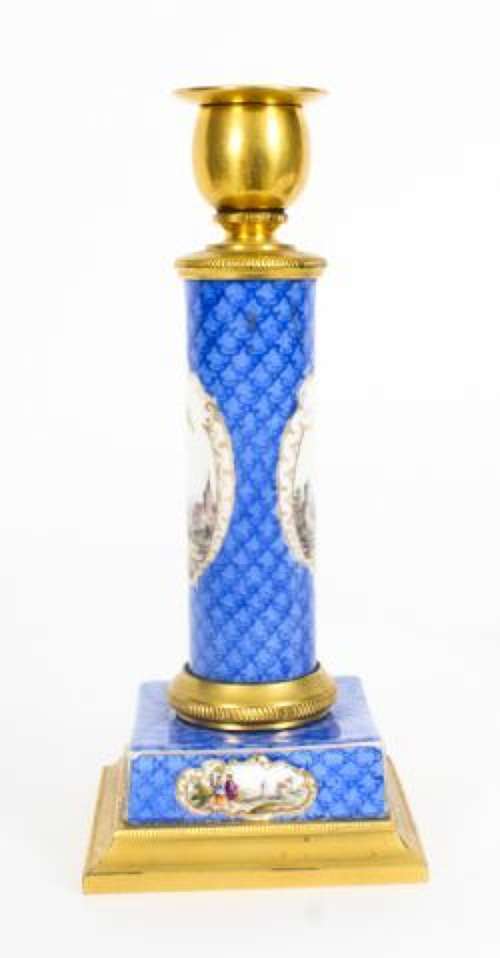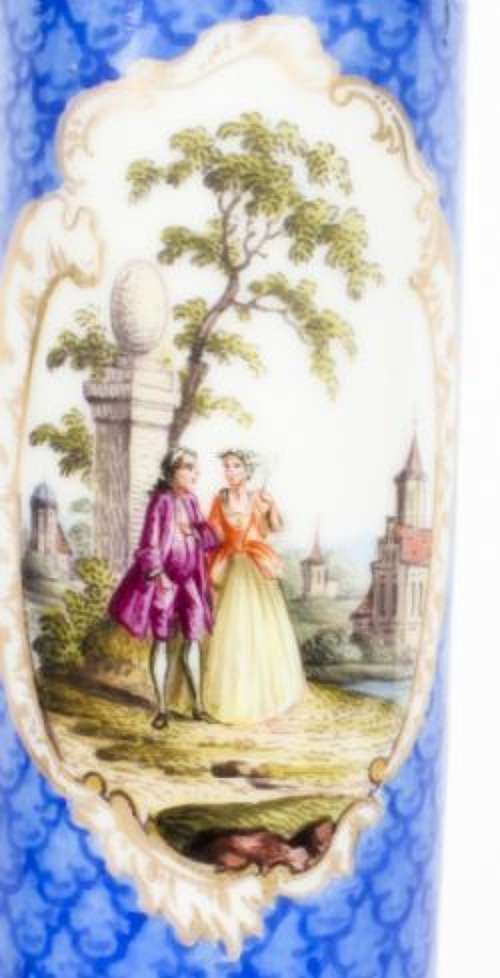Antique Pair Sevres Porcelain Mounted Ormolu Candlesticks C.1870 19th C
Delivery Quote Request
Please fill in the form below to request a delivery quote from Regent Antiques.
Contact Regent Antiques
 London, United Kingdom
London, United Kingdom
Simply fill in the below form to get in touch with Regent Antiques regarding this item.
About this item
This is a delightful antique pair of 19th century French Sevres porcelain mounted ormolu candlesticks, C1870 in date.
The square bases and plain column stems with tulip sconces decorated with romantic classical landscape panels on a blue scale grounds
There is no mistaking their unique quality and design, which is sure to be cherished by any admirer of ornamental porcelain.
Condition:
In excellent undamaged and unrestored condition with no chips, cracks or signs of repair, please see photos for confirmation of condition.
Dimensions in cm:
Height 21 x Width 9 x Depth 9
Dimensions in inches:
Height 8 inches x Width 3 inches x Depth 3 inches
Ormolu
(from French 'or moulu', signifying ground or pounded gold) is an 18th-century English term for applying finely ground, high-carat gold in a mercury amalgam to an object of bronze.The mercury is driven off in a kiln leaving behind a gold-coloured veneer known as 'gilt bronze'.
The manufacture of true ormolu employs a process known as mercury-gilding or fire-gilding, in which a solution of nitrate of mercury is applied to a piece of copper, brass, or bronze, followed by the application of an amalgam of gold and mercury. The item was then exposed to extreme heat until the mercury burned off and the gold remained, adhered to the metal object.
No true ormolu was produced in France after around 1830 because legislation had outlawed the use of mercury. Therefore, other techniques were used instead but nothing surpasses the original mercury-firing ormolu method for sheer beauty and richness of colour. Electroplating is the most common modern technique. Ormolu techniques are essentially the same as those used on silver, to produce silver-gilt (also known as vermeil).
Sevres Porcelain
traces its roots in France to early craftsmen who had small manufacturing operations in such places as Lille, Rouen. St. Cloud, and most notably Chantilly. It is from Chantilly that a cadre of workers migrated to the Chateau de Vincennes near Paris to form a larger porcelain manufactory in 1738.
French King Louis XV, perhaps inspired by his rumoured relationship with mistress Madame de Pompadour, took an intense interest in porcelain and moved the operation in 1756 to even larger quarters in the Paris suburb of Sevres. Sevres was also conveniently near the home of Madame de Pompadour and the King's own Palace at Versailles.
From the outset the king's clear aim was to produce Sevres Porcelain that surpassed the established Saxony works of Meissen and Dresden. Though the French lacked an ample supply of kaolin, a required ingredient for hard-paste porcelain (pate dure), their soft-paste porcelain (pate tendre) was fired at a lower temperature and was thus compatible with a wider variety of colours and glazes that in many cases were also richer and more vivid. Unglazed white Sevres Porcelain "biscuit" figurines were also a great success. However, soft-paste Sevres Porcelain was more easily broken. Therefore, early pieces of Sevres Porcelain that remain intact have become rare indeed.
The Sevres Porcelain manufactory always seemed to be in dire financial straits despite the incredibly fine works it produced. In fact, the king's insistence that only the finest items be created may have contributed to the difficulties. Only a limited number of European nobility could afford the extravagant prices demanded for such works. King Louis XV and eventually his heir, the ill-fated Louis XVI, were obliged to invest heavily in the enterprise. Ultimately, the Sevres Porcelain Factory produced items under the name of "Royal" and thus the well-known Sevres mark was born. King Louis XV even mandated laws that severely restricted other porcelain production in France so as to retain a near monopoly for his Sevres Porcelain. The king even willingly became chief salesman for the
Internal Ref:
A2528
Date of manufacture : 19th Century
Additional Information
880704 (AB-182646)
W: 9cm (3.5")H: 21cm (8.3")D: 9cm (3.5")
19th Century
![]() London, United Kingdom
London, United Kingdom
Regent Antiques was established in 1980. Born out of a natural love for art and beautiful objects, we have been a highly respected member of the antique fraternity ever since. Industry bodies of which we are a member include LAPADA and CINOA. Over the decades our business has gradually evolved...






































